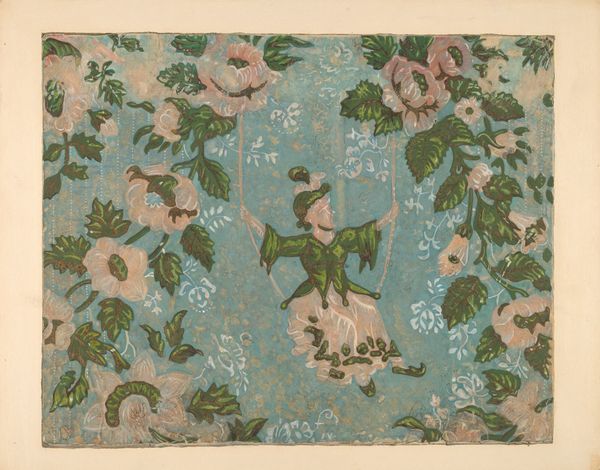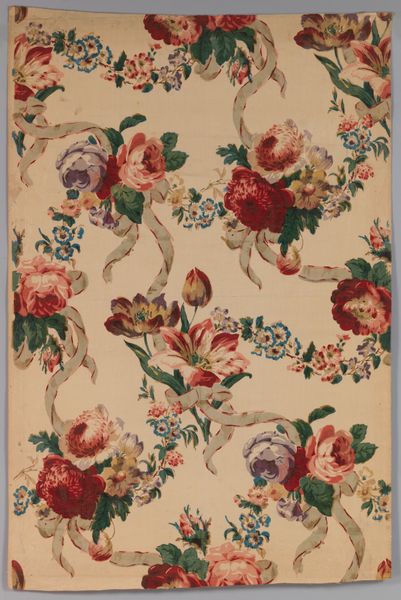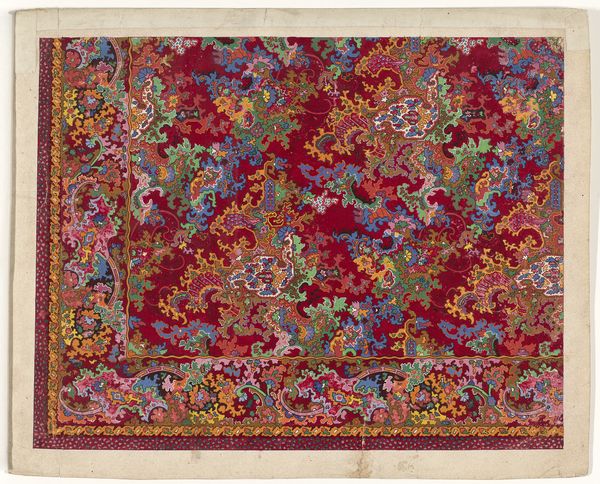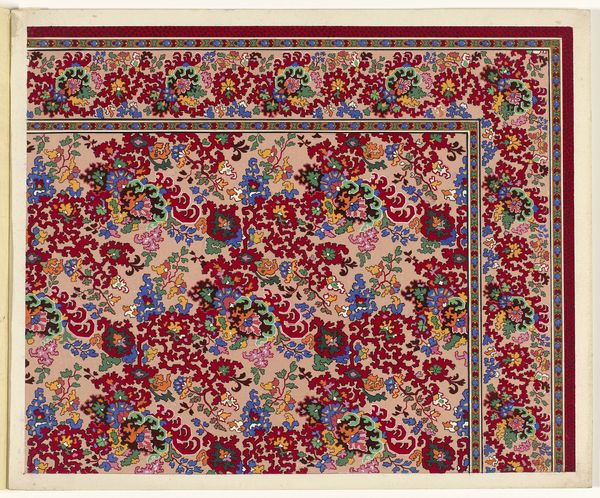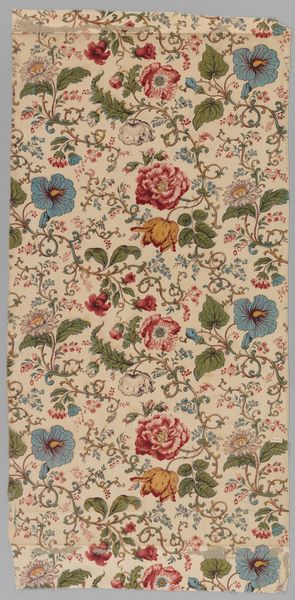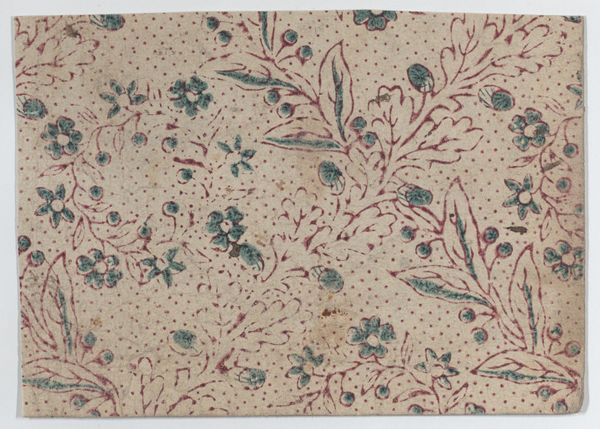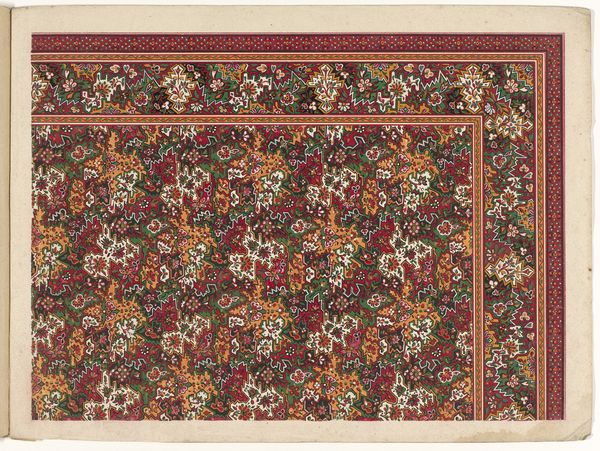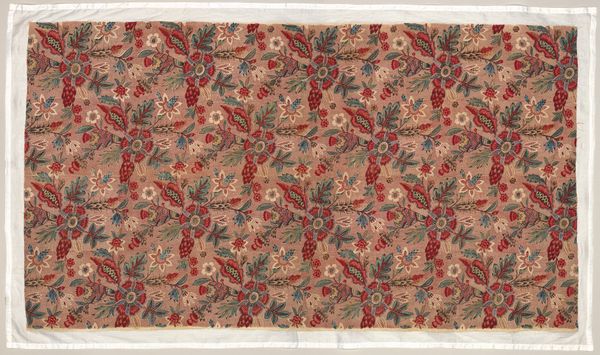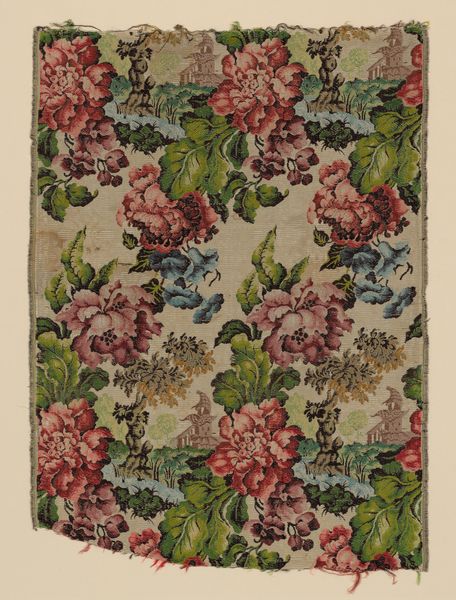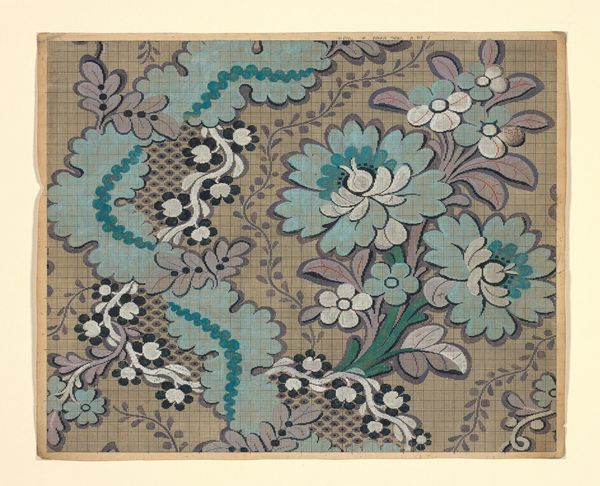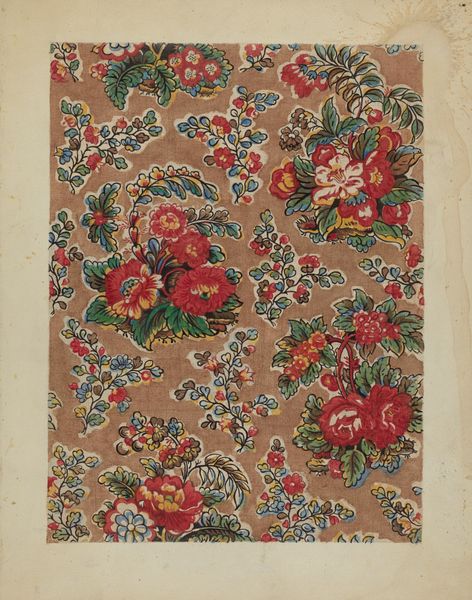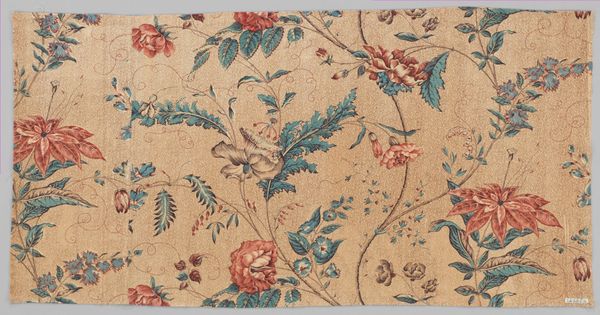
Dimensions: height 282 mm, width 365 mm
Copyright: Rijks Museum: Open Domain
Editor: This is an "Ontwerp voor een tapijt," or Design for a Carpet, created circa 1854 to 1864, using drawing and mixed media. I’m really drawn to the richness of the colours and the way the repeating pattern almost creates a sense of dense foliage. How do you interpret this work? Curator: What strikes me most is how this design sits within the Arts and Crafts movement. It seems innocent, perhaps simply decorative, but it’s so deeply embedded in the social and political upheavals of the 19th century. Think about the rise of industrialisation, the exploitation of labour… Editor: So, you’re saying this design is a reaction against something? Curator: Absolutely. Artists like William Morris were deeply concerned about the degradation of craft traditions and the dehumanising effects of mass production. They aimed to revive traditional skills and create beautiful, functional objects that would be accessible to all. What do you notice about the motifs and their arrangement? Editor: The floral patterns, the paisleys… They feel very organic, but also carefully ordered. It doesn’t feel haphazard. Curator: Precisely. That tension between the organic and the ordered is key. The Arts and Crafts movement valued both the beauty of nature and the skill of the human hand. They believed that well-designed objects could improve people's lives and even foster a more equitable society. It was a radical idea, really, to see beauty and social justice as intertwined. Editor: That’s fascinating. I hadn't considered the social implications of what I thought was just a pretty pattern. It definitely makes me see the piece in a different light. Curator: Me too. Every time I look at works from this period, I discover something new.
Comments
No comments
Be the first to comment and join the conversation on the ultimate creative platform.
